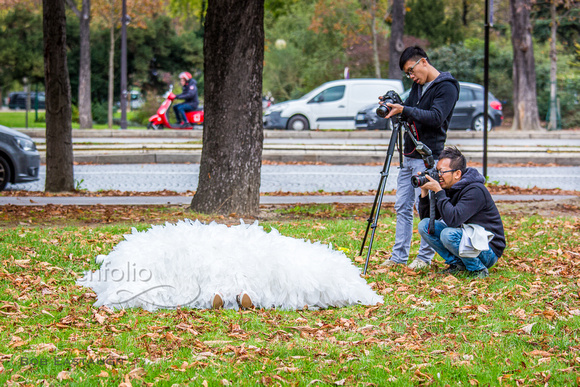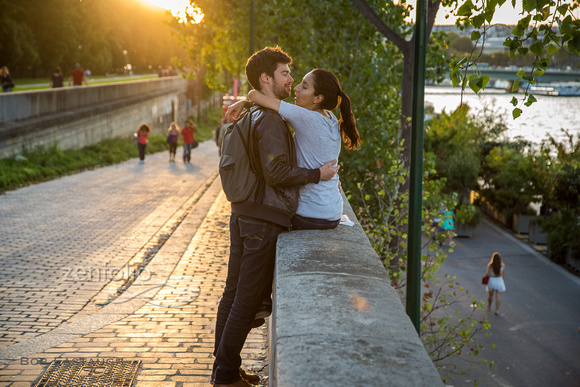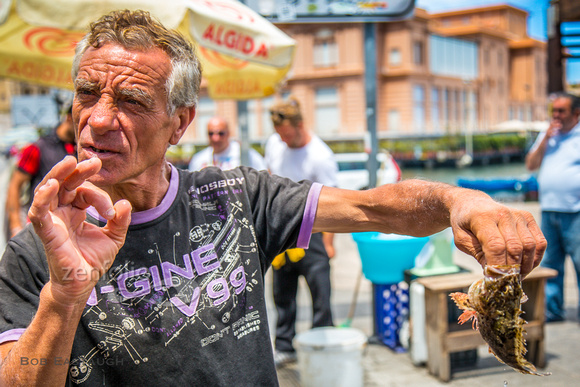Photo Terminology, Culture, and Propriety; Do Photographic "Captures" Imply Captive Subjects?
Before discussing photographic terminology, some perspective is needed.
There is a theory "primitive peoples" believe being photographed "steals one's soul." This theory assumes primitive people believe or fear the camera will capture their souls. Whether the theory is broadly, or even narrowly, anthropologically accurate is in dispute. The theory is at the least an urban legend: People who think they are not primitive widely attribute the belief to people they consider primitive. We don't need to consider whether any "primitive" people actually have this belief, or whether unquestioned public acceptance of the theory really reflects cultural condescension or smug self-elevation. We don't need to validate or reject the theory here, because it happens to correspond to a perfectly reasonable belief by the most urbane among us that a surprise photo taken at an unguarded moment may be unflattering, or worse, from a security or privacy standpoint. And the theory also accurately reflects what portrait photographers working at the highest levels think - quite blatantly - they are doing: capturing their subjects' souls.
This isn't an inquiry (yet) into whether harm will result. And it isn't a discussion about whether subjects (or photographers) have souls that could be captured. In "capturing" their subjects' souls, Avedon and Karsh stole nothing. They were paid well and their subjects surrendered voluntarily. Whether photography harms involuntary subjects might be a topic for later discussion.
Instead, this post only addresses the terminology of photography. I've heard respected professional photographers at lectures and workshops say pretty forcefully that they do not "capture" subjects, or "take" photos, or "shoot" photos or subjects. They disliked the terminology and its connotations. This was fascinating, because of my pre-existing discomfort about "shooting," "capturing," and "taking"; I had not decided whether the terms are accurate but insensitive, or whether better terms exist. Was this partly a search for kinder, gentler words in a strident world? Perhaps, but it also arose from an interest in technical and artistic accuracy as well as efficiency. Why use three words ("take a photograph") if one might do? A picture might be worth a thousand words, but that isn't inconsistent with using one right word instead of three clunky words to describe what one did or will be doing with a camera.
So, does the the usual terminology have unpleasant or inaccurate connotations? For street photographers, in particular, does the concept of "capture" imply that the subjects are captives? Are involuntary subjects - who haven't expressly consented to be photographed - captives? Their souls may not have been stolen as such, but has something been taken from them? Roget's offers these choices for "capture": "seize," "apprehend," "arrest," "grab," "bag," "snare," "trap." Is there an objectifying effect, that treats the subject as an object to be seized and displayed, as a trophy?
These images may help me work through this topic.


Above: "The Bride's Shoes," Paris 2014. Wedding photographers and brides and grooms are everywhere in Paris, posing and shooting openly, surrounded by spectators and other photographers. My image is no more a "capture" than those of the two wedding pros. It records a moment that could not possibly be considered private, in a public park 100 yards (meters) from the Seine and near a busy street.


"Evening Near the Seine," Paris, 2014, records a fairly prolonged embrace and discussion near a crowded avenue and near evening walkers and bikers on the Left Bank.




Above left: "Supermodel in Training," Italy, 2014. Taken with a longish lens without intruding on a family outing at the church nearby.
Above right: "Acqua Alte, San Marco," Italy, 2014. The father was taking his boy's picture on a rainy day in the flooded piazza. Throngs of tourists and locals walked in the gallery immediately behind the father.


This Bari fishmonger was both a willing tourist attraction and a hardworking advocate, pushing product to locals.


Laurie Pessemier is a skilled painter and inspirational instructor. Here she shelters a student on a blustery day in Paris.
Were these "captive" subjects? Did I seize, apprehend, arrest, grab, bag, snare, or trap them? More to come.
